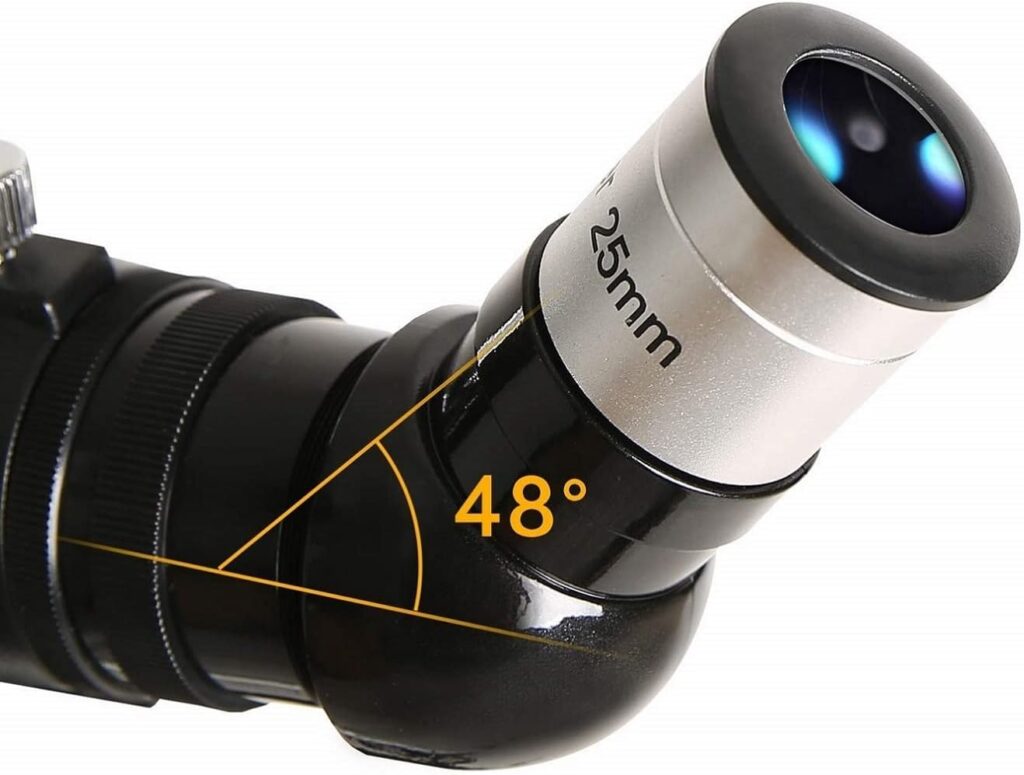Exploring the cosmos is a dream many of us share, and a telescope is your key to the wonders of the night sky. Among the various brands, Gskyer telescopes have emerged as a favorite for beginners and seasoned astronomers alike. But what makes them so special? Let’s dive into everything you need to know about Gskyer telescopes.
Introduction to Gskyer Telescopes
What Makes Gskyer Telescopes Stand Out?
Gskyer telescopes are renowned for their combination of affordability and quality, offering clear optics and reliable designs at accessible prices. Unlike many brands that focus solely on advanced models, Gskyer provides options tailored to beginners, making astronomy accessible to a wider audience. Their ease of use, durable materials, and sleek designs have set them apart in the competitive telescope market.
Who Are Gskyer Telescopes Best Suited For?
Whether you’re a curious beginner or a hobbyist looking for a reliable device, Gskyer telescopes cater to all. Their entry-level models, such as the Gskyer AZ70400, are perfect for kids and novice stargazers, while advanced models like the Gskyer EQ80900 cater to more experienced users. If you’re interested in planetary viewing, star clusters, or even lunar photography, Gskyer has something for everyone.
Types of Gskyer Telescopes
Refractor Telescopes
Refractor telescopes are the most common type offered by Gskyer. These use lenses to focus light, providing clear and crisp images. Ideal for beginners, refractor models are low-maintenance and perfect for observing the moon, planets, and terrestrial objects.
Reflector Telescopes
For those looking to explore deep-sky objects, Gskyer’s reflector telescopes are a great choice. These use mirrors instead of lenses, offering larger apertures for brighter and more detailed views of distant galaxies and nebulae.
Maksutov-Cassegrain Telescopes
Gskyer also offers compact Maksutov-Cassegrain models, which are versatile and portable. These telescopes combine lenses and mirrors, making them great for both planetary and deep-sky observations while maintaining portability.
Features and Specifications of Gskyer Telescopes
High-Quality Optics
Gskyer telescopes come with fully-coated optical lenses that minimize chromatic aberrations and ensure sharp images. With apertures ranging from 70mm to 130mm, you can enjoy stunning clarity for celestial and terrestrial objects alike.
Adjustable Tripods and Portability
The telescopes are paired with sturdy, adjustable aluminum tripods, ensuring stability during observations. Their lightweight and collapsible designs make them easy to carry, whether you’re setting up in your backyard or heading out to a remote stargazing spot.
User-Friendly Design
Even for those new to astronomy, Gskyer telescopes are designed to be intuitive. Their simple assembly process and accessible controls allow anyone to set up and start observing within minutes.
How to Set Up a Gskyer Telescope
Unboxing and Assembling
Setting up a Gskyer telescope is straightforward. Begin by unboxing all components, which typically include the optical tube, tripod, eyepieces, and a user manual. Assemble the tripod and mount the optical tube securely.
Aligning the Telescope Properly
To get the most out of your telescope, ensure it’s properly aligned. Start by pointing the telescope at a distant object during the day and aligning the viewfinder with the main lens for easier navigation at night.
Calibrating the Viewfinder
The viewfinder, or finderscope, helps locate objects in the night sky. Calibrate it by centering a distant object in both the finderscope and the telescope’s main lens. This step ensures accurate tracking of celestial objects.
Tips for Stargazing with a Gskyer Telescope
Choosing the Right Location
For optimal viewing, find a dark location away from city lights. Rural areas or designated stargazing spots offer the clearest skies, minimizing light pollution and maximizing visibility.
Best Practices for Clear Viewing
Keep your telescope lenses clean and free of dust. Allow your telescope to acclimate to the outdoor temperature for sharper images. Avoid handling the lens directly to prevent smudging.
Planning Your Observations
Research celestial events like meteor showers or lunar eclipses to plan your observations. Apps like Stellarium can guide you to locate stars, planets, and constellations with precision.
Accessories for Gskyer Telescopes
Additional Eyepieces
Gskyer telescopes often include basic eyepieces, but investing in additional options can significantly enhance your experience. Eyepieces with varying focal lengths, such as 10mm or 25mm, provide different magnifications, allowing you to observe both wide views and detailed close-ups of celestial objects.
Filters for Enhanced Viewing
Filters are invaluable for improving your telescope’s performance under specific conditions. For instance, moon filters reduce brightness and glare, making lunar details like craters and ridges more visible. Colored filters can highlight planetary features, such as the bands of Jupiter or the polar ice caps of Mars.
Smartphone Adapters for Astrophotography
If you’re eager to capture breathtaking shots of the night sky, consider a smartphone adapter. Gskyer telescopes are compatible with various adapters that securely attach your phone to the eyepiece, enabling you to take stunning photos of the moon, planets, and even deep-sky objects like nebulae.
Comparing Gskyer Telescopes to Other Brands
Affordability and Value for Money
One of Gskyer’s standout features is its affordability. Compared to high-end brands like Celestron or Meade, Gskyer offers similar features at a fraction of the cost, making it ideal for those new to astronomy or on a budget.
Performance vs. Competitors
While Gskyer telescopes deliver excellent performance for their price range, more advanced users may notice that premium brands offer better optics and stability. However, for beginner and intermediate astronomers, Gskyer provides a well-balanced combination of quality and accessibility.
Customer Satisfaction and Reviews
Gskyer telescopes consistently receive positive reviews from users who praise their ease of use, portability, and sharp optics. The brand’s reputation for delivering reliable, beginner-friendly products has solidified its place in the market.
Common Issues and Troubleshooting
Blurry Images
Blurry images are a common issue for beginners. This is often caused by incorrect focusing or unsteady mounts. To resolve this, ensure the eyepiece is securely in place and the tripod is stable. Adjust the focus knob slowly until the image becomes sharp.
Difficulty in Focusing
If focusing is challenging, check for any obstructions in the optical path. Clean the lens with a microfiber cloth to remove dust or smudges. Using a higher-quality eyepiece may also improve focus.
Maintenance Tips
To keep your Gskyer telescope in top condition, store it in a cool, dry place. Use a dust cover when not in use to protect the lenses. Regularly check for loose screws or components and tighten them to maintain stability.
Where to Buy Gskyer Telescopes
Online Marketplaces
Popular platforms like Amazon, eBay, and Walmart offer a wide range of Gskyer telescopes. These websites often include detailed product descriptions and customer reviews to help you make an informed decision.
Specialized Astronomy Shops
If you prefer hands-on guidance, visit a specialized astronomy store. These shops often have knowledgeable staff who can assist you in choosing the right model and accessories for your needs.
Warranty and After-Sales Support
When purchasing a Gskyer telescope, check for warranty details and after-sales support. Reliable sellers provide assistance with assembly, troubleshooting, and replacement parts, ensuring a smooth experience.
Frequently Asked Questions (FAQs)
What is the best Gskyer telescope for beginners?
The Gskyer AZ70400 is a top choice for beginners due to its compact design, affordability, and ease of use. Its 70mm aperture provides clear views of the moon and nearby planets, making it ideal for first-time users.
Can I use a Gskyer telescope for astrophotography?
Yes, many Gskyer telescopes are compatible with smartphone adapters and cameras. While they may not rival professional setups, they’re excellent for capturing detailed images of the moon and planets.
How do I maintain my telescope for long-term use?
Regularly clean the lenses with a microfiber cloth and avoid touching them with your hands. Store the telescope in a dry, dust-free environment and use a protective case or cover when not in use.
What can I see with a Gskyer telescope?
With Gskyer telescopes, you can observe the moon, planets like Jupiter and Saturn, and brighter deep-sky objects such as star clusters and nebulae. Larger aperture models provide more detailed views.
Is a Gskyer telescope worth the investment?
For beginners and hobbyists, Gskyer telescopes are absolutely worth the investment. They offer excellent value for money, user-friendly designs, and solid performance, making them a popular choice for stargazing enthusiasts.
Conclusion
Gskyer telescopes open up a universe of possibilities for those passionate about astronomy. Their affordable, beginner-friendly designs make them accessible to everyone, while their performance and versatility appeal to more experienced users. Whether you’re gazing at the moon, exploring deep-sky objects, or capturing breathtaking astrophotography, Gskyer provides the tools you need to embark on your cosmic journey.



